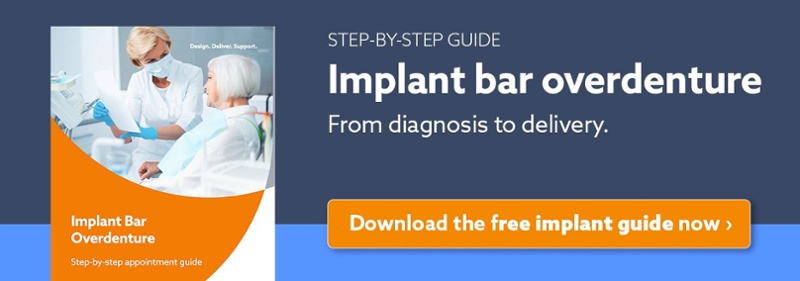Due to the increasing demand for dental implants, many dentists have chosen to expand their practices to include dental implant treatments. After undergoing rigorous training and coursework on diagnostics, surgical skills, and techniques, it’s easy to overlook simpler lessons such as proper tool setup. There is a plethora of literature detailing surgical methods and clinical protocols, but not many resources that highlight the necessary tools or placement of tools needed to complete successful dental implant treatments.
It’s important to understand the armamentarium, materials, and set-up procedures that are necessary to place implants. Tools and setup preferences are likely to vary between practitioners, especially as experience is gained, but a basic understanding of the requisite instruments, materials, and framework for the procedure will help ensure a smooth surgical implant treatment.
How to properly prepare the room
A sterile treatment room must be free from dust, debris, and potential infection. All counters, chairs, monitors, and working spaces should be thoroughly wiped down with CaviWipes, CaviCide, or the office’s preferred sterile cleaning supplies. Sterile drapes must be placed on countertops and fastened, especially under the implant machine, implant drill kit, or surgical cassette.
When preparing the implant machine and surgical kit, you must wear sterile gloves and be sure to place sterile tubing on the suction hose and handle of the drill you will be using. Patients, doctors, and technicians should all be dressed in sterile gowns, bouffant caps, and safety glasses. All present staff must wear sterile gloves.
7 tools needed for placing implants:
- Basic Setup.
The basic setup of dental instruments should include the following: two dental mirrors, two cotton pliers, a plastic or metal periodontal probe, a hemostat and suction holder, surgical scissors, retractors and scalpels
- Drill Kits.
Drill kits typically consist of drills, parallel pins, implant carriers, adapters, hand drivers, screw taps, and torque wrenches. Please note: the drills should be arranged by the order in which they are needed for the recommended drilling sequence based on the implant diameter. If the implant is being placed by a surgical guide, the drill keys should be checked prior to surgery to ensure a proper fit. Having multiple sets with varying sleeve diameters and extra fixation pins is recommended should complications arise during surgery.
- Surgical Handpiece and Motor.
You will need a sterile Monoject syringe for sterile saline irrigation. Additionally, you will need the sterile saline pump with tubing that’s included in the implant motor and headpiece for internal and external irrigation.
- Tissue Punch Kit.
When performing a flapless surgical procedure, a tissue punch can provide access to the implant site with a minimal amount of surgical trauma. A micro-blade scalpel and large serrated curette are helpful in excavating the tissue plug from the implant site.
- Digital Caliper.
This electronic device is used to measure and reconfirm drill-stop lengths.
- Basins and Garbage Bag.
Be sure to set aside one small garbage bag for used gauze and include three sterile cups or basins near your surgical site for water, saline, and sharp objects.
- Anesthetic.
If necessary for the case, it’s important to have lidocaine, Septocaine, Carbocaine, and/or Marcaine on hand for administration.
Before the patient leaves your care, be sure to review postoperative instructions and home-care regimen. Patients should leave with medication or prescriptions as needed, sterile gauze, and ice packs to promote healing.
To learn more about how the latest advancements in dental implants can help your office, speak to a DDS Lab clinician today.
Click here to schedule a consultation with our technical team › 
References:
https://www.perioimplantadvisory.com/clinical-tips/surgical-techniques/article/16411907/how-to-set-up-an-implant-surgical-room-a-checklist
https://glidewelldental.com/education/inclusive-dental-implant-magazine/volume-6-issue-2/practice-management-basic-tray-setup-for-dental-implant-surgery/
https://www.dentistryiq.com/clinical/restorative-cosmetic-and-whitening/article/16352114/5-things-you-need-to-know-prior-to-offering-dental-implant-service